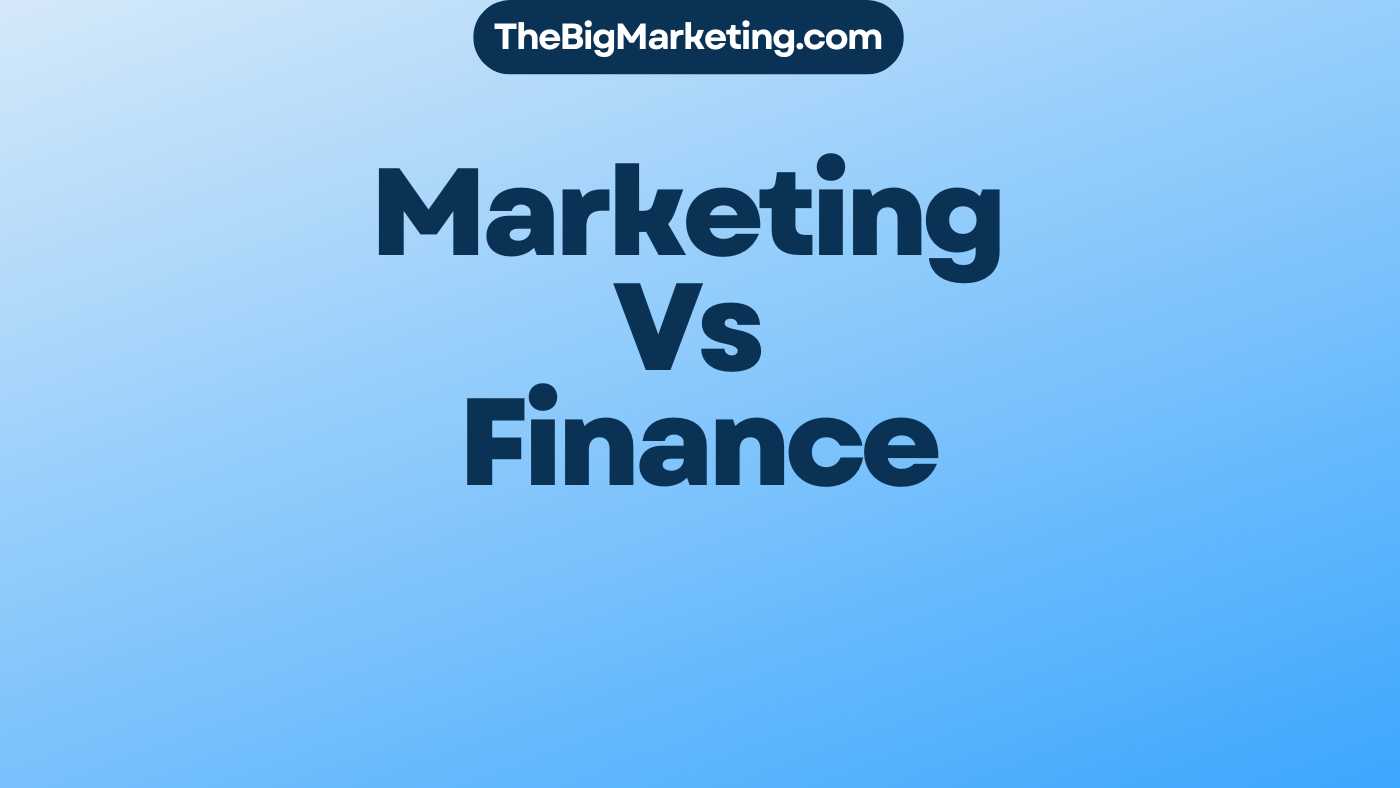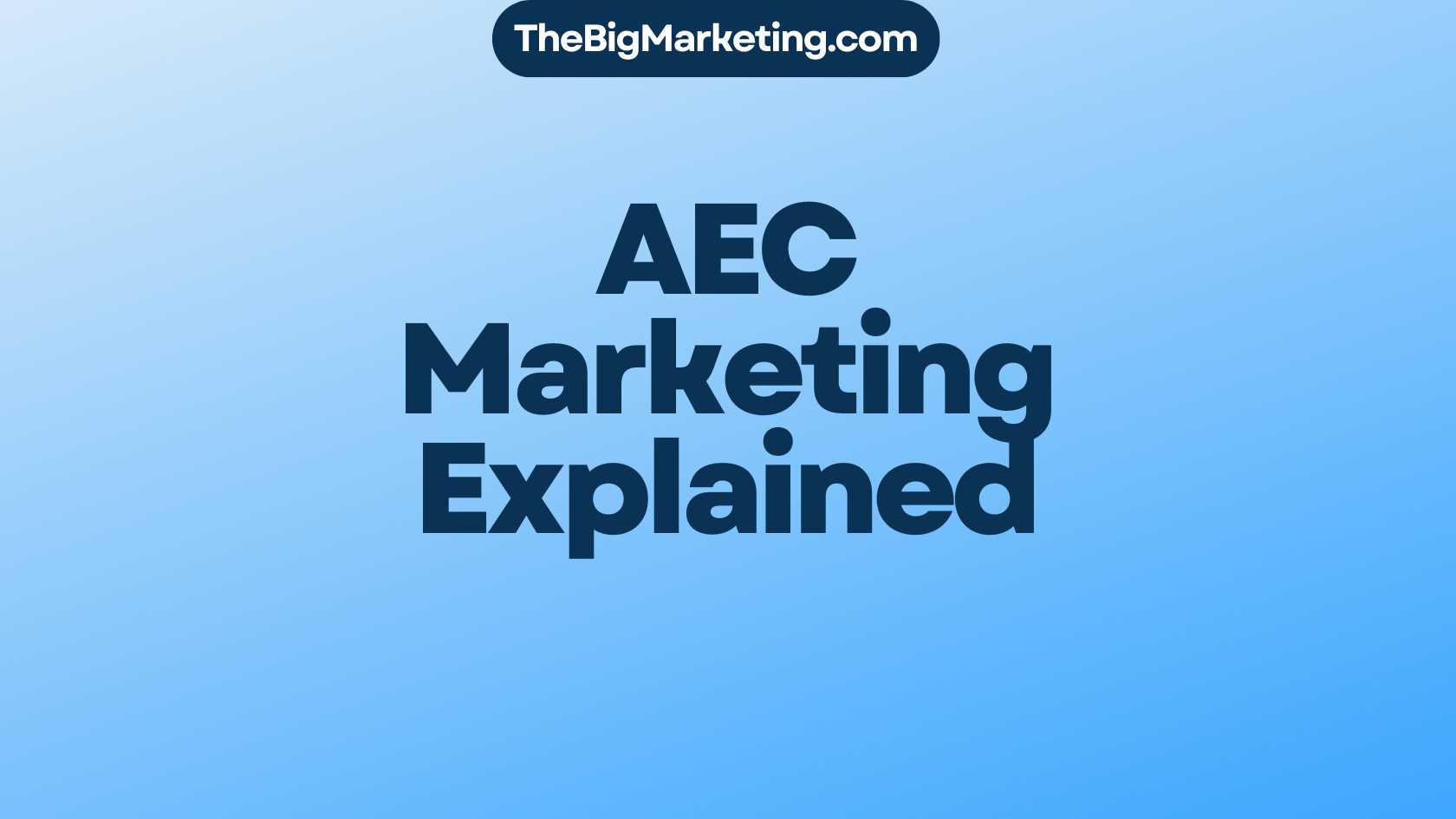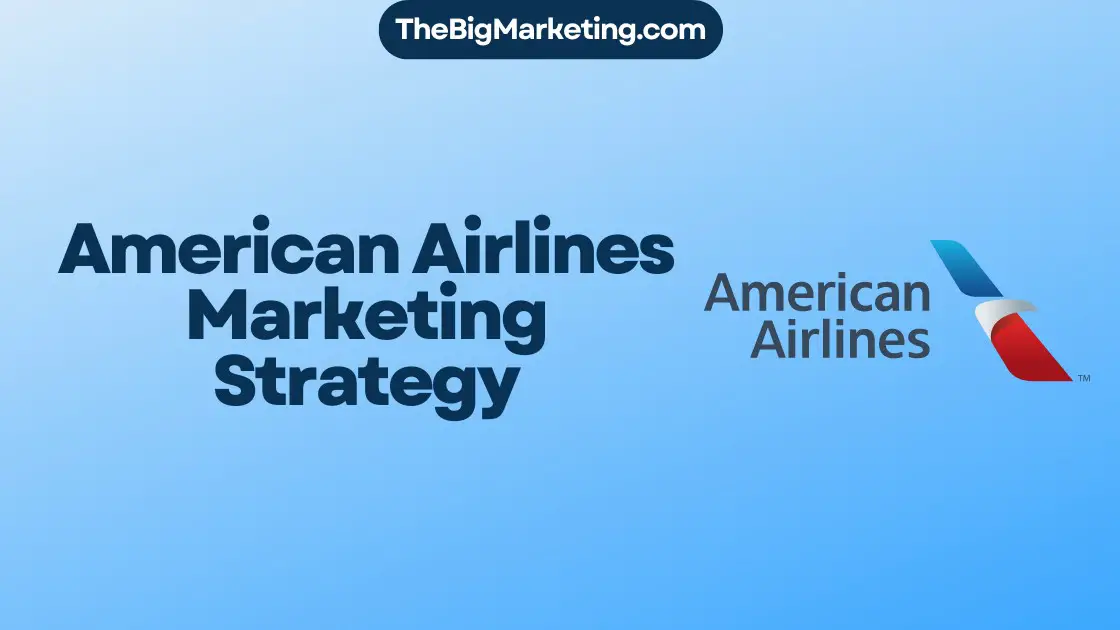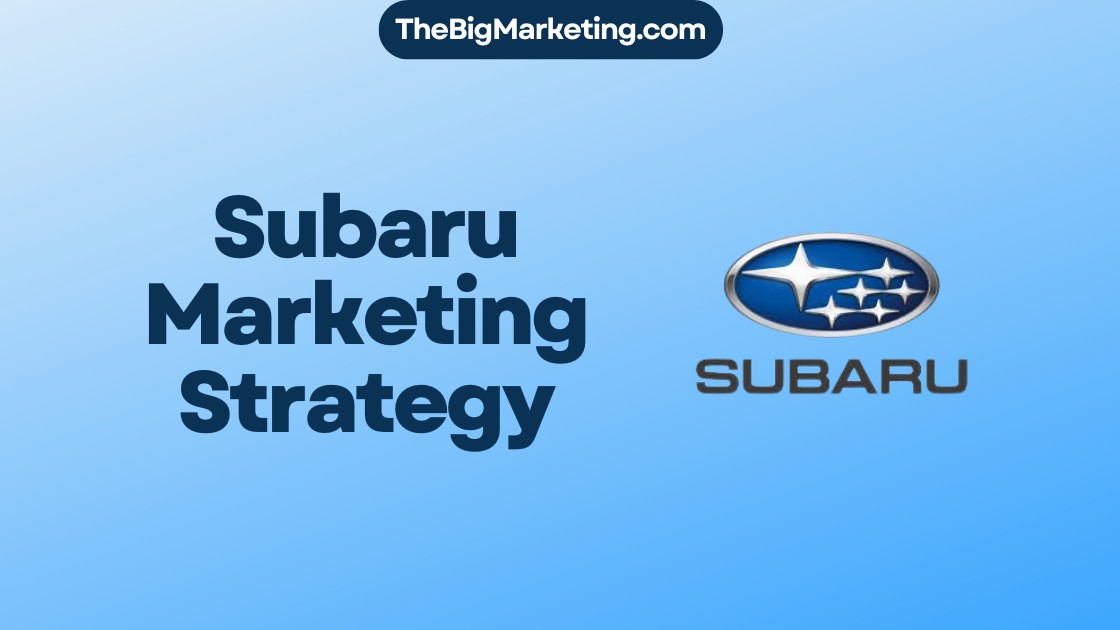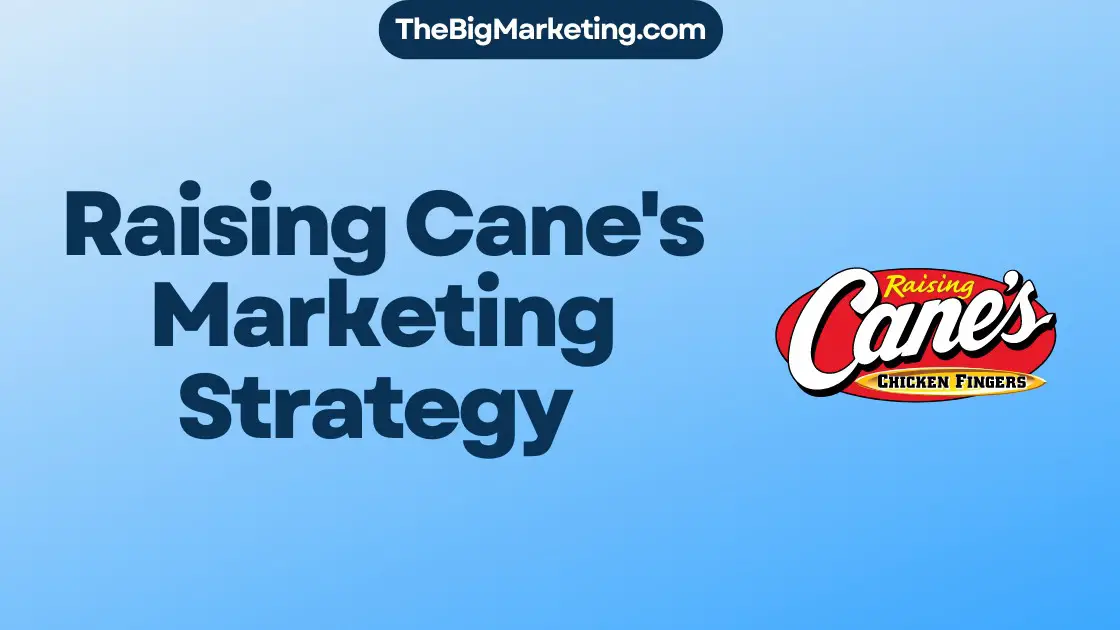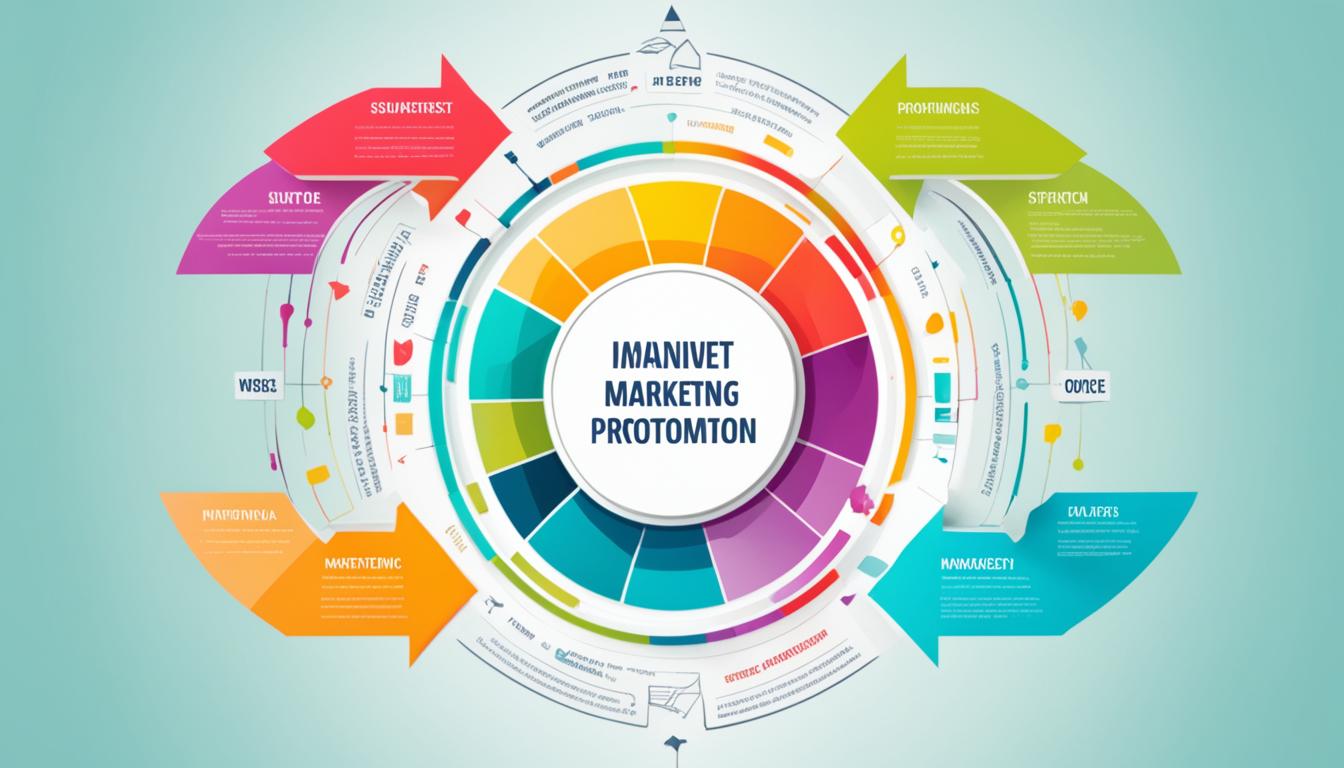Mid Funnel Marketing, also known as the consideration stage, is crucial. Here, potential customers are seriously thinking about your offerings. They’ve moved past just knowing about your product or service. This stage lets you build a strong bond with your potential customers.
At this stage, your goal is to lead prospects closer to buying. You’ll need content that speaks directly to them, personalized emails, and to earn their trust. It’s vital to set mid funnel marketing apart from other stages. This means understanding your audience well, delivering valuable content, nurturing leads carefully, and always refining your approach.
Key Takeaways:
- Mid Funnel Marketing is the stage where potential customers consider your product or service seriously.
- Targeted content, personalized emails, and building trust are essential in mid funnel marketing.
- A well-defined strategy is crucial for effective mid funnel marketing.
- Constant evaluation and adjustment of tactics are important for optimizing mid funnel marketing.
- Understanding your target audience and their needs is key to successful mid funnel marketing.
The Role of Middle-of-Funnel Marketing
Middle-of-funnel (MOF) marketing is key during the customer journey. It’s when potential customers start to really think about your product or service. The main goal here is to teach leads, grow relationships, and help them decide to buy. It’s not just a simple step from the top to the bottom of the funnel. It involves special strategies to share useful info, build trust, and answer customer worries.
At this stage, customers look for information and weigh their choices. Your job as a marketer is to educate them on what you offer. You want to be seen as a trusted source and grow the relationship. By knowing what your audience needs and their problems, you can make content that offers helpful insights and solutions.
Lead nurturing is vital in MOF marketing. Creating personalized and targeted ways to communicate lets you connect with leads. You address their issues and aid their decision-making. This means using emails, social media, and content marketing to give valuable resources and build a strong link.
Addressing Customer Concerns and Building Trust
When customers are in the middle of the funnel, they might have doubts or questions. It’s crucial to tackle these worries and build trust with clear, informative talks. Sharing detailed product info, case studies, testimonials, and FAQs can ease their doubts. This makes them more confident in what you offer.
Forming relations with leads is also key to MOF marketing. By making your communication personal and showing real interest in their needs, your brand stands out. Do this through personalized emails, tailored content, and interactive experiences.
Guiding Leads Towards Conversion
The main aim of MOF marketing is to encourage leads to buy. Keep engaging and nurturing them to help them decide to purchase. Use well-thought-out content and calls to action (CTAs) for this. Think about giving free trials, demos, or special discounts to motivate them to act.
Also, using marketing automation tools and data analysis improves your MOF efforts. By keeping an eye on how customers interact and what gets their attention, you can adjust your strategies. This data helps you better your messages, enhance your lead nurturing, and get more people to buy.
MOF marketing is crucial in the customer journey. Focus on nurturing leads, educating them, and building relationships to move them along the funnel. Putting time and resources into this stage pays off with more sales and helps your business grow in the long term.
Creating Targeted Content
Mid funnel marketing aims to meet the specific needs and interests of potential customers. It’s key to craft content that adds value and is relevant. A well-made call-to-action (CTA) can gently push them to act.
To target your content, first segment your audience. Understand what they want, need, and how they act. This lets you make messages that truly hit home. By solving their problems and highlighting your product’s or service’s benefits, you lead them closer to choosing you.
Your content should inform and teach, not just sell. Too much sales talk can drive people away when they’re still thinking it over. Offer valuable advice, tips, and info. This makes you a trusted authority in your industry.
Make sure your content is genuinely useful. Your aim is for potential customers to see its worth and find it helpful. Solve their issues with solutions that match their specific situations.
It’s also vital that your content is relevant. It should talk directly to your audience about what matters to them. With good research and an understanding of your audience, create content that’s timely and suited to their needs.
Ending your content with a strong call-to-action (CTA) is crucial. This can be an invite for a free trial, to download a resource, or to buy something. A clear CTA guides them to the next step on their journey.
Creating great content is an ongoing process. Always check how your content is doing, look at engagement, and tweak as necessary. By always providing valuable and relevant content for specific audiences, you help guide them through the mid-funnel towards conversion.
Example of Tailored Content for Different Audience Segments
| Audience Segment | Topic | Relevant CTA |
|---|---|---|
| New Entrepreneurs | 5 Steps to Launching a Successful Startup | Download our Startup Toolkit for Free |
| Marketing Professionals | Advanced Strategies for Lead Nurturing | Register for Our Webinar on Advanced Lead Nurturing |
| Small Business Owners | 10 Ways to Improve Customer Retention | Sign Up for a Free Customer Retention Consultation |
Personalization and Relationship Building
In the middle of funnel marketing, making things personal matters a lot. It helps in getting potential customers more interested and boosts sales. By making messages fit each customer’s needs, you create experiences that connect deeply with them.
Creating customer avatars or personas helps personalize your approach. These avatars are based on customers’ demographic and psychographic info. They show you what your ideal customers like and what bothers them. With this knowledge, you can make your content speak directly to them.
Making strong connections with prospects is key to gaining their trust. Sending them personalized emails and social media messages is one way to do it. Use their name, talk about previous interactions, and share stuff they like to keep them engaged.
It’s also important to address what customers need. Make content that tackles their problems and shows your solutions. This could be blog posts, videos, or webinars. It positions your brand as a go-to for reliable information.
Trust in your brand is vital at this stage. By giving personalized, useful content and always being there to talk, you make your brand more credible. Be fast to reply to customer questions, offer top-notch service, and quickly solve any problems. This builds a strong bond of trust.
List of Strategies for Personalization and Relationship Building:
| Strategy | Description |
|---|---|
| Email Personalization | Customize emails with the customer’s name, refer to past interactions, and provide relevant content. |
| Social Media Engagement | Create personalized social media messages and respond to comments and inquiries. |
| Customized Content | Create targeted content that addresses customer needs and pain points. |
| Exceptional Customer Service | Provide prompt and professional customer service to build trust. |
By focusing on making things personal and building relationships, you can connect better with potential customers. This will help you guide them through the middle of the funnel and increase your chances of making a sale. Always look to improve your tactics to give your prospects the best experience.
Lead Qualification and Nurturing
Lead qualification and nurturing are key in mid funnel marketing. The customer journey is complex. Businesses must examine prospects to see their future potential. Lead qualification helps decide which leads might buy something.
The next step is lead nurturing. This means helping leads through the marketing funnel and building a strong relationship. It’s about trust, relevant info, and answering their questions. This keeps the communication going and is tailored to each lead.
For successful lead nurturing, use tactics like targeted emails and educational content. This keeps businesses connected with leads, improving the chance of making a sale. Building this relationship is vital for customer loyalty in the future.
Combining lead qualification with nurturing helps businesses focus where it counts. It lets them connect with likely buyers and guide them towards a purchase. It’s about finding interested leads and then building a connection as they move closer to buying.
| Tactic | Description |
|---|---|
| Email Marketing | Sending targeted and personalized emails to engage leads, provide valuable content, and nurture the relationship. |
| Content Personalization | Creating customized content based on the specific needs and interests of leads, showing them that the brand understands their challenges. |
| Lead Scoring | Assigning scores to leads based on their engagement level, interest, and fit, allowing businesses to prioritize follow-ups and allocate resources effectively. |
| Regular Communication | Maintaining consistent and meaningful communication with leads through various channels to stay top-of-mind and build trust. |
| Social Media Engagement | Interacting with leads on social media platforms, responding to queries, and sharing relevant content to foster engagement and relationship development. |
Lead Qualification
Lead qualification checks if leads are ready for the next customer journey stage. It helps spot those likely to buy next. It looks at factors like who they are, how they behave, and if they match the product.
Lead Nurturing
Lead nurturing builds relationships and guides leads. It uses targeted content and talks to leads about their concerns. The aim is to keep leads interested, earn their trust, and turn them into buyers. This takes ongoing efforts, planned follow-ups, and watching their behavior.
Email Marketing for Mid Funnel Leads
Email marketing is key for connecting with mid funnel leads and guiding them towards a purchase. Targeted email campaigns allow businesses to share valuable content and personalized messages. This keeps your brand fresh in the lead’s mind and helps build a strong bond.
To use email marketing effectively at this stage, focus on providing informative and tailored content. By customizing your messages to meet the lead’s needs, you make the information more relatable. This guides them closer to a decision to buy.
Personalizing content is crucial for engaging mid funnel leads. By using data on the lead’s preferences, you can create content that meets their specific needs. This approach helps to establish trust and shows you understand their requirements, making conversion more likely.
Building a relationship through email is also vital. Regular emails position your brand as a reliable source and leader in your field. Offer useful product insights, engaging blog posts, and personalized content. This makes leads feel valued and understood.
Here’s an example of how email marketing can be used in the mid funnel:
“`
| Email Content | Purpose |
|---|---|
| Product Update | Inform leads about new features or enhancements that add value to their experience. |
| Targeted Blog Post | Offer informative content that addresses specific pain points or challenges, positioning your brand as an industry expert. |
| Exclusive Offer | Provide limited-time promotions or discounts to incentivize lead conversion. |
| Personal Follow-up | Engage in one-on-one communication to address individual questions or concerns, further building a relationship. |
“`
By using these strategies, you can keep mid funnel leads interested and lead them towards buying. Remember, the key is to offer value while keeping communication at the right level. The aim is to encourage a purchase decision by aligning content with their interests and needs.
Creating Detailed How-To Guides and Educational Content
Creating detailed how-to guides and educational content is a smart move in marketing. These resources teach potential customers and solve their problems. This makes your business stand out as a leader in your field. It shows you know how to solve problems.
Guides offer instructions, tips, and solutions. They help potential buyers understand your products better. This way, they’re more likely to buy from you.
Educational content is great for customers thinking about buying. It teaches them how to make smart choices. And shows them how your products can help. By giving detailed guides, your brand becomes known as a helpful source.
A good how-to guide is more than just basic steps. It gives deep explanations and real-life examples. It aims to solve problems. By answering common questions, you show you value your customers. This leaves a good impression.
Key Benefits of Detailed How-To Guides and Educational Content:
- Inform leads about the specific features and benefits of your products or services
- Address common pain points and offer solutions
- Demonstrate your expertise and position your brand as a thought leader
- Build trust and establish credibility with potential customers
- Keep leads engaged and nurtured throughout the consideration stage
With how-to guides, you help customers make smart decisions. It’s key to know what they need to learn. Creating content that solves their problems can lead them closer to buying.
Let’s look closely at a sample how-to guide:
| Section | Description |
|---|---|
| Introduction | An overview of the topic and its relevance to the audience |
| Step 1: Identify the Problem | Guide the reader in understanding the issue they are facing |
| Step 2: Gathering the Necessary Materials | List the tools or resources required to solve the problem |
| Step 3: Explaining the Process | Break down the solution into clear and actionable steps |
| Step 4: Providing Tips and Best Practices | Add extra insights and recommendations to enhance the process |
| Step 5: Troubleshooting Common Issues | Address potential challenges and provide solutions to overcome them |
| Conclusion | Summarize the key takeaways and encourage further engagement |
Creating content like this is essential. It gives customers the tools they need to understand your products. It places your brand as a trusted leader. Always check if your content is working and update it to match your audience’s changing needs.
Making Communication Easy and Simple
Efficient communication is key during the mid-funnel marketing stage. It helps in nurturing leads and guiding them towards making a purchase. It’s crucial to have easy ways for leads to ask questions and interact with your brand. Tools like chatbots, FAQ libraries, and customer service support can simplify communication. This enhances lead engagement.
Chatbots provide quick help to leads by answering their questions instantly. This makes it easy for leads to get information and connect with your brand at any time. Adding chatbots on your website or social media ensures your leads get help whenever they need it.
FAQ libraries are also great for making communication simple. They contain common questions with straightforward answers. This lets leads find information on their own. It saves time for everyone and provides valuable info without needing to talk directly. FAQ libraries are a handy resource for leads.
Great customer service makes communication straightforward. Quickly answering lead questions, offering custom support, and being genuinely helpful can improve lead relationships. Good customer service experiences build trust. This makes leads more likely to become customers.
Benefits of Easy and Simple Communication:
- Enhanced Lead Engagement: Making communication easy increases lead interaction with your brand.
- Improved Customer Satisfaction: Fast and simple communication methods like chatbots and FAQ libraries make lead experiences better.
- Increased Trust: Great customer service and fast responses build trust, making leads choose your brand.
- Streamlined Lead Qualification: Good communication gathers info from leads, helping understand their needs better.
- Greater Conversion Rates: Simple communication guides leads through the sales funnel, boosting conversions.
By focusing on straightforward communication with leads, companies can improve their relationships and customer service. Adding chatbots, FAQ libraries, and strong support teams boosts engagement, trust, and conversions.
Examining CTAs and Lead Scoring
CTAs are essential for guiding potential customers towards a purchase. They provide clear instructions on what to do next. It’s crucial to examine your CTAs’ structure and effectiveness. This ensures they lead prospects closer to buying.
Effective CTAs for Mid-Funnel Marketing
An effective CTA must be compelling, relevant, and match the customer’s needs. Consider these points when making your CTAs:
- Use action-oriented language that shows the value of taking action.
- Create urgency or exclusivity to prompt immediate action.
- Make sure the CTA is easy to see on your site or landing page.
- Use bright colors or visuals to make the CTA pop out.
A well-crafted CTA can boost lead conversion rates and move prospects closer to a purchase.
Implementing Lead Scoring for Effective Lead Qualification
Lead scoring evaluates leads based on their interest and qualifications. By scoring leads, businesses can identify the most promising ones. This optimizes lead qualification and ensures efficient use of resources.
To effectively implement lead scoring, keep these tips in mind:
- Set scoring criteria based on demographics, engagement, and behavior.
- Assign weights to each criterion reflecting its importance.
- Regularly update your scoring model to stay relevant.
Using marketing automation tools for lead scoring streamlines the qualification process. It allows focusing on high-potential leads for better conversion rates.
Examining CTAs and Lead Scoring Example
Consider how CTAs and lead scoring can enhance a mid-funnel marketing campaign:
| CTA | Lead Scoring |
|---|---|
| An email with a CTA for a free guide on common customer challenges. | A high score for leads who engage deeply with the guide. |
| A landing page CTA for a personalized demo request. | A high score for leads who fill out the form meeting specific criteria. |
| A social media ad CTA to sign up for a webinar. | A high score for leads who register and participate in the webinar. |
Analyzing different CTAs and their lead scoring data gives insights into their effectiveness. This helps refine marketing strategies for better CTA results.
The right CTAs and lead scoring can efficiently qualify leads, boosting conversion chances. Continuously enhancing CTAs and your scoring model improves mid-funnel marketing and lead value.
Improving Internal Handoff Procedures
Sales and marketing need to work together for better mid funnel marketing. They should further nurture and guide leads towards buying. A good handoff process and communication are key for this teamwork.
Improving how teams hand off leads makes sure they are ready for sale talks. This avoids confusion and keeps everyone on the same page. It ensures a smooth change of leads from marketing to sales.
Clear processes help sales understand leads better. They know what the leads need and where they are in their buying journey. When sales and marketing align, customers get a better experience. This also increases the chances they will buy.
The Benefits of Improving Internal Handoff Procedures:
- Less confusion and wrong messages between teams
- Better lead sorting, so only the best leads go to sales
- Sales gets a deeper insight into what leads want
- More leads become customers, improving business
- A smooth experience for customers from start to end
By setting up good handoff steps, businesses can connect sales and marketing better. They can work as one team. This leads to more sales and success.
Conclusion
Mid Funnel Marketing is key in guiding potential customers during their buying journey. It helps in turning interest into decisions by nurturing leads. This process is essential for improving customer journeys and boosting conversions.
Understanding your audience is vital. Segmenting your audience and creating personalized content helps meet their specific needs. Marketing automation tools aid in sending targeted emails, making communication efficient.
It’s important to keep checking and improving your strategies. Evaluating automated campaigns and personalizing content helps find areas to enhance. This constant improvement process boosts customer experiences and conversion rates.
In essence, Mid Funnel Marketing drives customers from knowing about a product to buying it. Through effective strategies, customer journey optimization, and automation tools, businesses can strengthen relationships with leads. This sets the stage for achieving marketing success.
